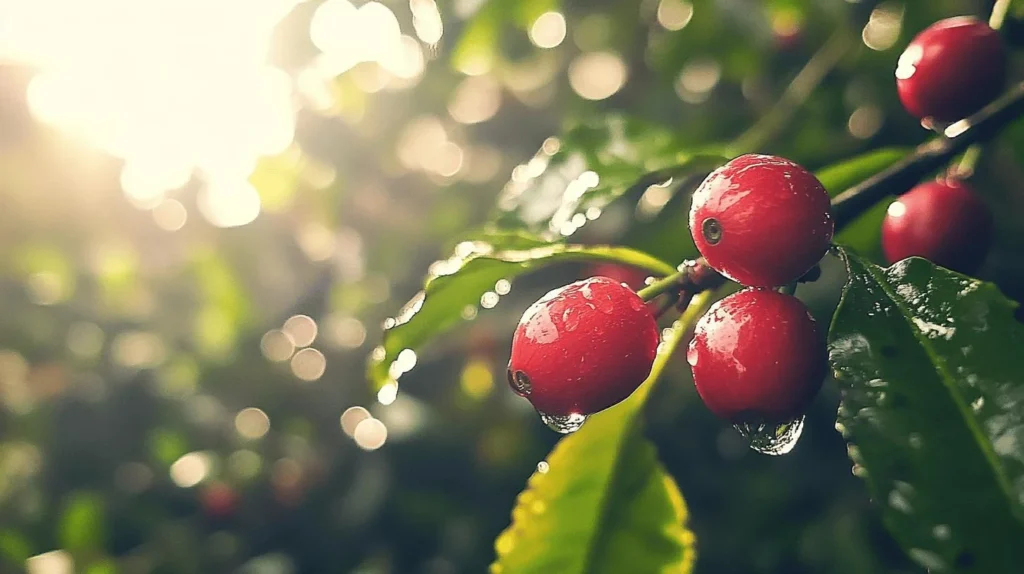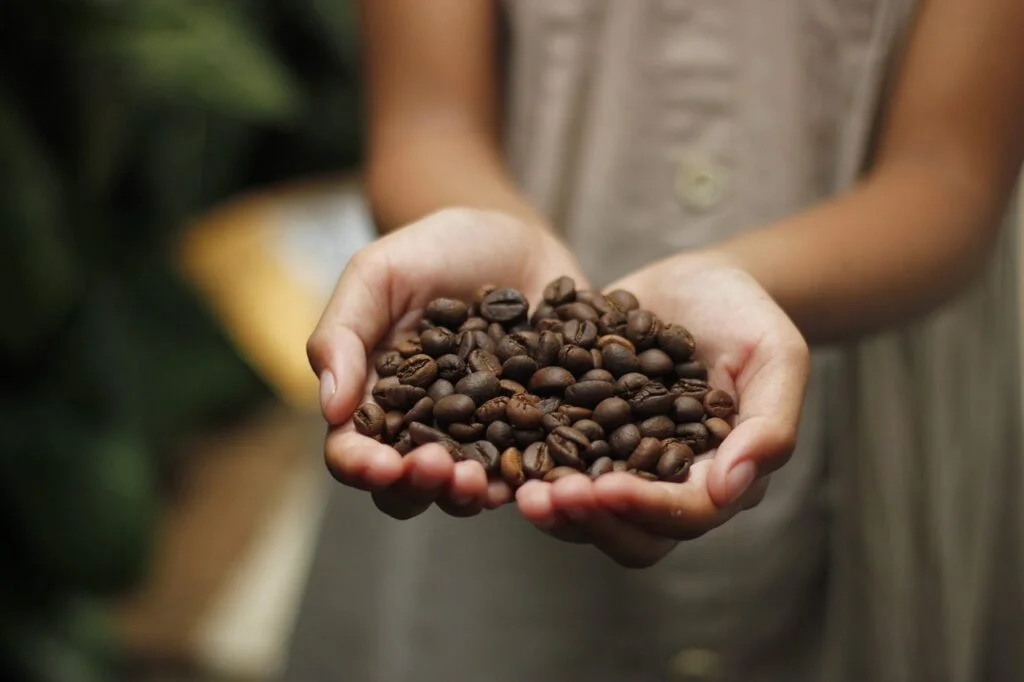
Artisanal Rituals for a Memorable Customer Experience
How can brands create a more balanced and memorable customer experience by blending artisanal product quality with thoughtful everyday rituals that keep people coming back?

The diverse world of coffee flavors and experiences is deeply influenced by the varieties of coffee plants. Four main types—Arabica, Robusta, Liberica, and Excelsa—are each celebrated for their distinct characteristics. These coffee varieties play a crucial role in the industry, providing diverse flavors, aromas, and textures relished by millions every day.
According to legend, coffee was discovered centuries ago by an Ethiopian goat herder named Kaldi. He noticed his goats becoming unusually energetic after eating red berries from a particular shrub. This accidental discovery led to the cultivation of coffee in Ethiopia and later in Yemen, marking the start of coffee’s global journey. Today, coffee is cultivated worldwide, primarily within the “bean belt,” which provides ideal growing conditions and contributes to the flavor profiles we know and love.
My name is Craig Keel. Over the years, I have honed my coffee palate by experimenting with different types of beans, exploring their origins, and learning about the intriguing varieties of coffee plants. This journey has taught me that the secret to a perfect cup lies in quality beans and mindful roasting.

Simple guide to varieties of coffee plants:
The world of coffee is rich and diverse, largely thanks to the different varieties of coffee plants. These varieties include Arabica, Robusta, Liberica, and Excelsa, each offering unique flavors and characteristics.
Arabica is the most popular coffee species, making up about 60% of global coffee production. It’s known for its smooth, sweet taste with hints of fruit and sugar. Arabica coffee plants thrive at higher altitudes, particularly in Latin America. This species originated from a natural hybridization between two other coffee species, Coffea canephora (Robusta) and Coffea eugenioides. Arabica’s appeal lies in its complex flavor profile and aroma, making it a favorite among coffee enthusiasts. However, it is also susceptible to pests and diseases, which can affect its cultivation.
Robusta coffee is known for its strong, bitter flavor and higher caffeine content. It accounts for about 40% of the world’s coffee production. Unlike Arabica, Robusta plants grow well at lower altitudes and are more resistant to pests and diseases. This resilience makes it a valuable crop for farmers in various regions, including Vietnam and Brazil. Robusta’s bold taste is often used in espresso blends to provide a rich crema.
Liberica is less common but offers a distinctive experience. It has a large, irregular shape and a unique woody or smoky flavor. Originally from West Africa, Liberica is now mainly grown in the Philippines and Malaysia. Its flavor profile is quite polarizing—some love it, while others do not. This variety is often enjoyed with sugar to balance its intense taste.
Experts once considered Excelsa a separate species, but they now classify it as a variety of Liberica.It is primarily cultivated in Southeast Asia and is known for its tart, fruity profile and complex flavors. Excelsa beans are often used in blends to add depth and complexity. They are lighter in aroma and caffeine, making them a unique addition to the coffee world.
The varieties of coffee plants are not just about taste; they showcase the strength and flexibility of coffee cultivation in diverse climates and regions. Exploring these coffee types helps us appreciate their unique qualities and their role in shaping coffee culture around the world.

When it comes to varieties of coffee plants, each offers a unique taste and history. Let’s explore some popular ones: Typica, Bourbon, Caturra, Gesha, Catuai, and SL28.
Typica is one of the oldest and most widespread coffee varieties. It’s known for its sweet, mild, and approachable flavor profile, with notes of chocolate and nut, complemented by hints of spice. The acidity is mild and balanced, often evoking dried and dark stone fruits like black cherry and plum. Typica has been selectively bred for over 500 years, and it’s still widely planted in countries like Peru, Mexico, and Jamaica.
Named after an island off the coast of Madagascar, Bourbon is a culturally and genetically significant variety. It’s a parent to many other coffee varieties. Bourbon is cherished for its brown sugar-like sweetness and fruit notes like cherry and peach. It has a round body, making it a favorite among coffee drinkers looking for a rich and smooth experience.
Caturra is a mutation of Bourbon, identified in Brazil. It was selected for its smaller plant size and higher production levels compared to Bourbon. Caturra has a similar taste to Bourbon but is somewhat brighter, offering a lively twist to the classic Bourbon flavor.
Originating from the Gori Gesha forest in Ethiopia, Gesha is a highly valued variety due to its rarity and unique flavor. It features a light, bright, and floral profile with tea-like characteristics, setting it apart from other coffees. Gesha’s exclusivity and distinctive taste make it a prized choice for coffee connoisseurs.
Catuai is a cross between Mundo Novo and Caturra, developed in Brazil. It’s highly productive and popular in Central America, especially in Honduras. Catuai has a delightful flavor profile, with brown sugar sweetness, notes of pastry, and mild, cooked fruit. Nutty flavors like pecan and almond are also common, making it a perfect pairing with pie.
SL28 is a renowned variety from Kenya, known for its exceptional flavor. It features grapefruit-like brightness and a savory flavor reminiscent of sundried tomato, with a syrupy body. SL28 is celebrated for its complexity and is a favorite among those who appreciate a bold and vibrant cup.
Each of these varieties of coffee plants contributes to the rich mix of flavors and experiences that coffee offers. Understanding these varieties allows coffee lovers to explore the diverse world of coffee and find their perfect cup.
Each cup of morning coffee brings a distinct flavor profile shaped by its origin and processing. Each cup has a unique blend of tastes influenced by different coffee plant varieties and their growing environments. The type of coffee plant plays a big role in the flavors you experience. Factors like soil health, altitude, and how the coffee is processed also shape these flavor profiles.

Coffee flavor notes are like the personality traits of your brew. They can range from fruity and floral to nutty and chocolatey. For example, the Typica variety is known for its chocolate and nut notes, while Gesha offers a light, floral taste with tea-like qualities. These flavors aren’t added; they come naturally from the coffee beans’ chemistry.
The soil where coffee plants grow significantly impacts their flavor. Mineral-rich soils, often found in cooler climates, help develop complex flavors with bright acidity. In contrast, volcanic soils in warmer regions contribute to a fuller body and deeper flavors. This “terroir” effect means that even the same coffee variety can taste different depending on where it’s grown.
Altitude is another key player in shaping coffee’s flavor. Higher altitudes slow down the maturation of coffee cherries, leading to a denser bean with more concentrated flavors. Ethiopian coffees, for instance, are grown at high altitudes and are known for their fruity and floral notes. Meanwhile, Brazilian coffees, grown at lower altitudes, often have nutty flavors and low acidity.
How coffee is processed after harvest also affects its flavor. There are several processing methods, such as washed, natural, and honey. Each method brings out different characteristics in the beans. Washed coffees tend to have a cleaner taste with brighter acidity, while natural processed coffees are fruitier and heavier in body. The choice of processing can improve or mellow the inherent flavors of the coffee variety.
Understanding these factors helps coffee enthusiasts appreciate the unique tastes and aromas in their cup. It also guides them in exploring different varieties of coffee plants to find their perfect flavor match.
Coffee isn’t just a drink; it’s a global phenomenon. The varieties of coffee plants play a crucial role in this worldwide impact. Let’s explore how these varieties affect coffee production, climate change, and disease resistance.
The world relies heavily on coffee, with over 120 million people depending on it for their livelihoods. The two main species, Arabica and Robusta, dominate the market. Arabica accounts for about 70% of global coffee production. It’s valued for its superior taste but is more sensitive to environmental changes. Robusta, on the other hand, is hardier and thrives in diverse climates, making it essential for maintaining coffee supply in challenging conditions.

Climate change is a looming threat to coffee production. Rising temperatures and unpredictable weather patterns are shrinking suitable growing areas. Researchers predict that by 2050, the areas suitable for coffee cultivation may decrease by 50%. Arabica is particularly vulnerable, needing specific temperature and altitude conditions. This has led farmers to explore more resilient coffee varieties and adopt sustainable practices.

Coffee plants face numerous diseases, with coffee rust being one of the most devastating. This fungal disease can wipe out entire crops if not managed properly. In Colombia, nine new aggressive strains of coffee rust have been identified, urging farmers to plant resistant varieties. Over 84% of Colombian coffee crops are now resistant, showcasing the importance of breeding and selecting resilient varieties.

The global coffee industry is adapting to these challenges by researching and cultivating new coffee plant varieties. These efforts aim to ensure a sustainable future for coffee production and protect the livelihoods of millions of people.
The coffee genus, known as Coffea, includes at least 120 species. Among these, only a few are used for coffee production. The most notable species are Arabica (Coffea arabica) and Robusta (Coffea canephora), which dominate the global coffee market. However, other species like Liberica and Excelsa also contribute to the diversity of coffee flavors and experiences.
When we talk about the main types of coffee, we are usually referring to the four primary varieties of coffee plants:
Arabica: Known for its smooth taste and complex flavors, Arabica beans are the most popular, making up about 60-70% of the world’s coffee production.
Robusta: These beans are more bitter and contain higher caffeine levels. They are often used in instant coffee and espresso blends for their strong flavor.
Liberica: With a bold and smoky flavor, Liberica beans are less common but offer a unique coffee experience.
Excelsa: Often used in blends to provide a tart and fruity profile, Excelsa is appreciated for adding depth to coffee flavors.
Taste is subjective, but many coffee enthusiasts agree that Arabica is the best-tasting coffee species. Arabica beans are celebrated for their mild and nuanced flavor profiles. Factors like soil health, altitude, and processing methods further influence these flavors, allowing Arabica beans to offer a wide range of tasting notes, from fruity and floral to nutty and chocolaty.
Robusta, while less favored for its bitter taste, is still appreciated in specific coffee cultures and blends. On the other hand, Liberica and Excelsa provide unique flavors that cater to niche markets and adventurous coffee drinkers.

These varieties of coffee plants not only offer different flavors but also play a crucial role in the coffee industry’s adaptability to environmental challenges and consumer preferences.
At Equipoise Coffee, we believe that understanding the varieties of coffee plants is essential to appreciating the rich diversity and unique flavors in every cup. Our commitment to ethical sourcing means we carefully select beans from growers who prioritize quality and sustainability. This ensures that each sip not only tastes exceptional but also supports fair practices and environmental care.
We specialize in small-batch roasting, which allows us to focus on each bean’s unique character. This precise roasting process brings out the natural flavors and ensures a smooth, well-balanced cup without bitterness. Our dedication to freshness and balance is at the heart of everything we do, from the farm to your cup.
We invite you to explore coffee with us. Find the unique flavors and stories behind each variety through our coffee beans varieties page. Whether you’re a seasoned coffee enthusiast or new to the journey, there’s always something new to learn and enjoy.
Join us in celebrating the art of coffee and savor the balance and clarity that Equipoise Coffee brings to every cup.

How can brands create a more balanced and memorable customer experience by blending artisanal product quality with thoughtful everyday rituals that keep people coming back?

Independent coffee shops have always been about more than caffeine—they’re hubs of creativity, connection, and care. As café culture continues to evolve, new trends are

Introduction Independent cafes win when they feel like the neighborhood’s living room and operate with the discipline of a great kitchen. Below is a quick

Discover how top specialty coffee brands create lasting loyalty through storytelling, sourcing, and community connection. Real tips from 6 industry experts.

Discover the ultimate showdown between two beloved coffee brewing methods: the French press and Chemex. Explore how each technique caters to distinct palates, with the French press delivering bold flavors and the Chemex presenting a bright, clean taste.

Unlock the secrets to brewing the perfect cup of coffee with our comprehensive guide on using a coffee scale. Discover how precise measurements enhance flavor and consistency while eliminating bitterness.

Discover how water temperature plays a vital role in brewing the perfect cup of coffee. This article delves into the ideal temperature range of 195°F to 205°F for optimal flavor extraction, enhancing the enjoyment of high-quality beans.

Discover the world of curated specialty coffee bundles, perfect for enthusiasts seeking quality and craftsmanship. This article explores the benefits of ethically sourced, small-batch beans from brands like Equipoise Coffee, offering diverse flavor profiles that elevate your brewing experience.

Discover the art of manual brewing to elevate your coffee experience! This article explores various techniques like pour-over, French press, and AeroPress, revealing how they enhance flavor and your connection to every cup.